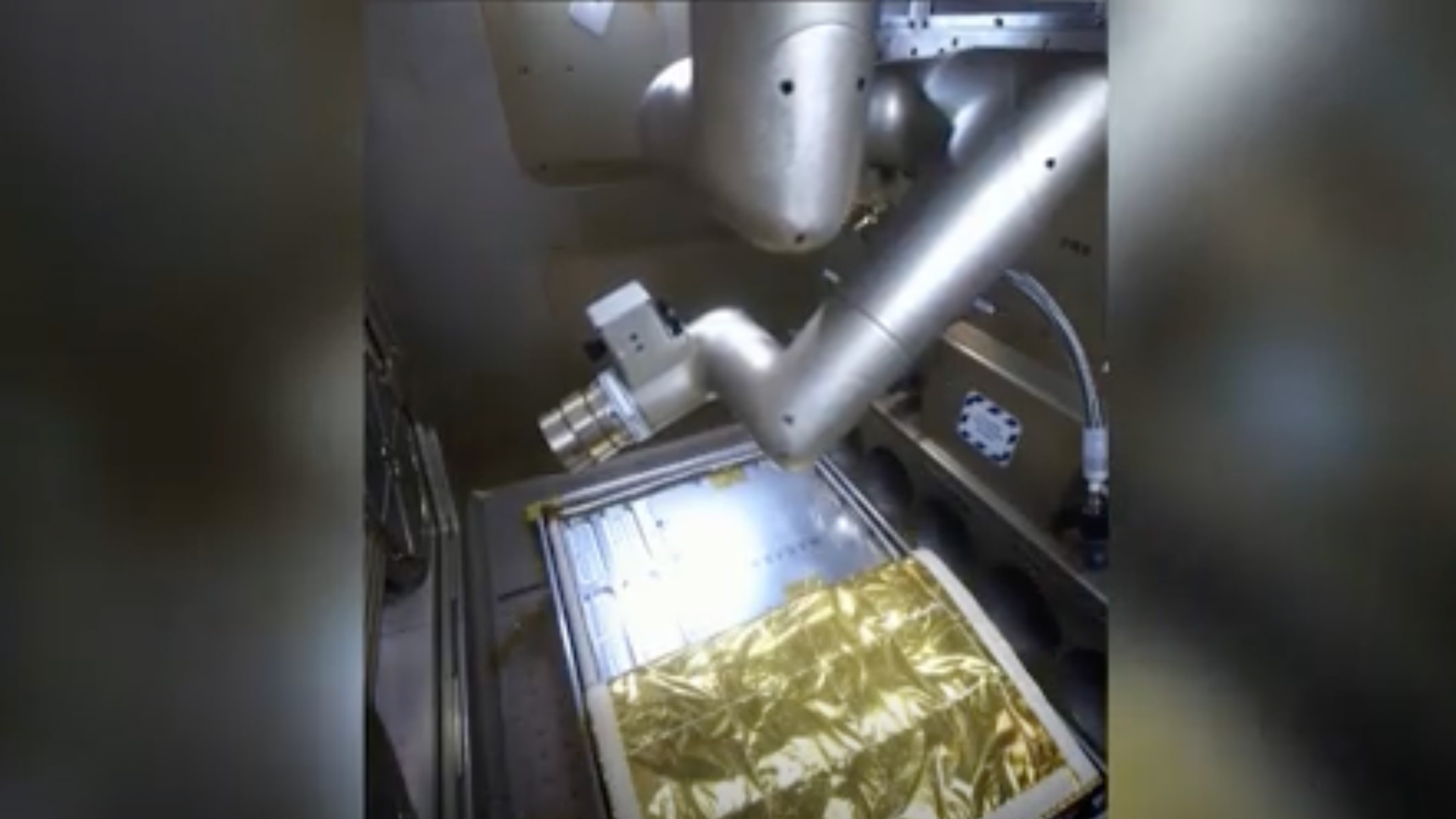Surprise! China's space station has a 3rd, mini robotic arm. Watch it in action (video)
Tiangong also boasts a highly capable pair of larger arms on its exterior.
China's space station has a third, smaller robotic arm operating inside to assist astronauts, we now know.
The Tiangong space station notably has a pair of robotic arms on its exterior. These arms — which are 33 feet (10 meters) and 16.4 feet (5 m) long, respectively, and can "crawl" on the outside of Tiangong — have helped with the space station's construction and assisted astronauts during spacewalks.
Within the space station's Mengtian experiment module, however, there is a third, much smaller, dextrous arm that can assist everyday activities, Chinese broadcaster CCTV recently revealed.
Related: Watch Chinese astronauts light a match on Tiangong station (video)
The interior arm is about 27.5 inches to 31.4 inches (70 to 80 centimeters) long, and its operational accuracy can reach 0.004 inches (0.1 millimeters). It can help astronauts with maintenance, installation and adjustment operations, according to CCTV. It can also prove valuable for space experiments.
"For example, after the external payloads are taken into the cabin, including some of the biological loads, when there is need to sterilize them after the experiments, we can change the end tools fixed to the robotic arm to do the work," said Zhang Lu, a researcher at the Technology and Engineering Center for Space Utilization under the Chinese Academy of Sciences.
"We could have different end tools installed on the robotic arm to perform different tasks in the years to come. If there are some tedious tasks like turning screws or sampling, we can replace the end tool with a small clamping jaw, or an electric scissors, to complete the operation," Zhang said.
Breaking space news, the latest updates on rocket launches, skywatching events and more!
China completed the construction of the three-module Tiangong space station in late 2022. The sixth and latest crew arrived aboard the Shenzhou 17 spacecraft late last month.
China wants to keep Tiangong permanently occupied for at least a decade and is looking to expand the orbital outpost in the coming years.

Andrew is a freelance space journalist with a focus on reporting on China's rapidly growing space sector. He began writing for Space.com in 2019 and writes for SpaceNews, IEEE Spectrum, National Geographic, Sky & Telescope, New Scientist and others. Andrew first caught the space bug when, as a youngster, he saw Voyager images of other worlds in our solar system for the first time. Away from space, Andrew enjoys trail running in the forests of Finland. You can follow him on Twitter @AJ_FI.

